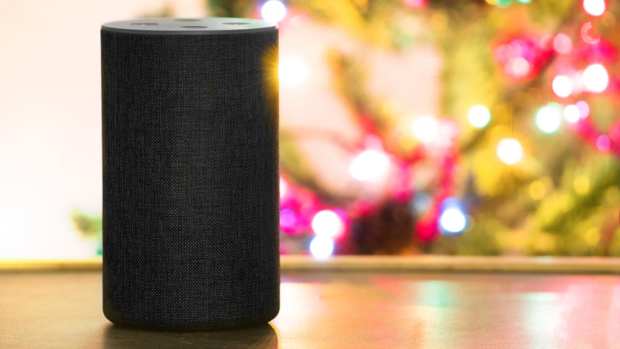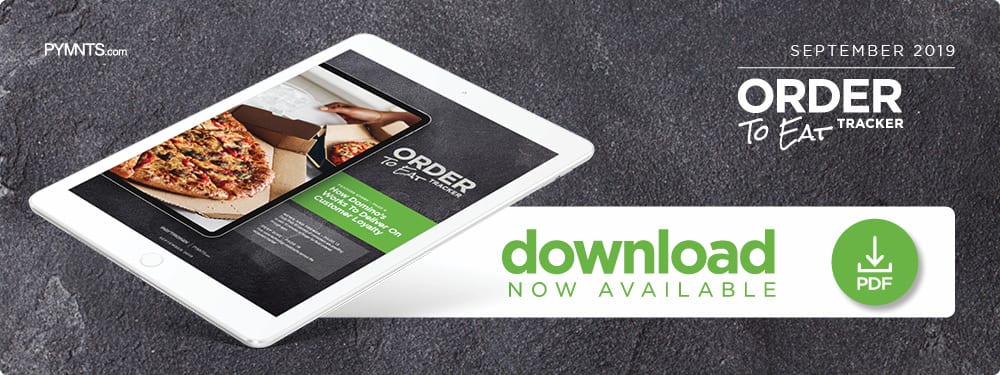Deep Dive: QSRs Find Their Voice

More than one-quarter of all U.S. consumers who own voice-activated devices have used them to order food. These consumers commonly rely on technologies such as
Amazon Echo or Google Home to have food delivered. The following Deep Dive highlights how voice technology could change the ways restaurants and consumers connect.
The market value from quick-service restaurants (QSRs), fast food chains, drive-thru establishments and deliveries is estimated to be worth $273 billion. Technology plays a critical role in keeping this market thriving by connecting consumers with their preferred fast-casual, fast food and QSR restaurants. Many eateries are actively working to meet consumers where they are by offering more ordering solutions and addressing their patrons’ increased appetites for speedy and convenient tech-enabled experiences.
Voice-based technology is among the latest digital channels through which QSR customers are placing orders. The PYMNTS 2018 Remote Payments Report found that 28 percent of all consumers now own voice-activated devices such as Amazon Echo or Google Home smart speakers. Among those device owners, 27 percent indicated using their devices to make purchases the week before the survey.
This means that voice-activated technology presents a significant opportunity to change how restaurants connect with their customers. It also comes with its unique set of challenges, however. The following Deep Dive explores what QSRs need to understand what consumers expect from voice-based systems.
How Consumers Use Voice Technology For Restaurants
Voice technology has already become a cornerstone of consumers’ search activities, with some accounts estimating that one billion voice searches are performed each month. It is predicted that nearly half of all searches will be voice-based by next year.
Consumers are not limiting their voice-based searches to just home-integrated systems like Amazon Echo or Google Home, either. They are also using the technology behind the wheel during their daily commutes, meaning a significant opportunity could be found among those who drive to work each day. According to PYMNTS Digital Drive Report, 53.3 percent of commuters use voice assistants on their smartphones while they drive. The report also found that an increasing share utilizes voice capabilities during their trips, with nearly 17 percent of commuters using vehicle-integrated voice assistants to connect to the internet while they drive. Ordering food and finding restaurants are vital parts of these commuters’ routines, and 14 percent used voice assistants to order meals for delivery while they were driving.
Consumers are most likely to use voice technology to seek out restaurant information, with 53 percent indicating they would like to use such solutions to search for restaurants based on menu information. Forty-nine percent use voice offerings to find information about specific restaurants, and 44 percent use it to find restaurants based on their cravings.
Voice-ordering technology is particularly popular among younger consumers, with an estimated 25 percent of 16- to 24-year-olds using such tools during web searches on their mobile devices. Considering the popularity of voice search and consumers’ overall inclination to use different tools and channels to place orders, restaurants are under pressure to up their digital antes and meet consumers’ expectations.
Restaurants Add Voice Technology To The Menu
Several restaurants are acknowledging the role that voice technology will play in the coming years and are working to make it more seamless for customers. Among them are well-known chains like Domino’s, KFC, Pizza Hut and Wingstop. Many of these players have enabled their customers to use in-app voice-activated ordering, while others have integrated with major virtual assistants — such as Cortana, Alexa or Google Assistant — to accomplish that task.
Voice-activated ordering often requires consumers to build guest profiles to complete orders. They can then place orders by speaking commands aloud. A customer craving pizza, for example, could place an order by stating, “Alexa, order my usual from Domino’s.”
Customers using voice commands to place orders will still want access to certain features, like loyalty programs. This means restaurants will have to enable these offerings across different channels, including voice, mobile, web, social media and email, to meet customers’ expectations. These integrations will allow restaurants to more effectively communicate offers and collect data to understand better what their patrons expect from their interactions.
Voice Adoption Hurdles
Voice technology is poised to play a significant role in the restaurant ordering experience, but there are still several barriers to its adoption. Unlike online- or mobile-ordering channels that are visual in nature, voice-ordering systems often lack screens that allow customers to review their orders, which can lead to frustrations if orders are misunderstood and expectations are not met.
The technology could also struggle with being able to process customers’ distinct voices or dialects. Texas-based Buffalo wings chain Wingstop worked with Amazon to thwart just such a potential issue, ensuring that its customers — who often speak in a distinct Southern dialect — could easily place orders that Alexa could understand.
Additionally, rewards and loyalty programs must be made accessible through the voice-ordering process. Restaurants will need to partner with artificial intelligence (AI) solution providers to help make their voice technology-ordering experiences more seamless. Such automated systems could enable customers to place voice orders that arrive via the same channels as online and mobile ones.
Consumers have spoken in terms of voice technology’s potential. It now falls to restaurants to listen to their expectations for ordering and to move forward by adding the technology to their menus.

